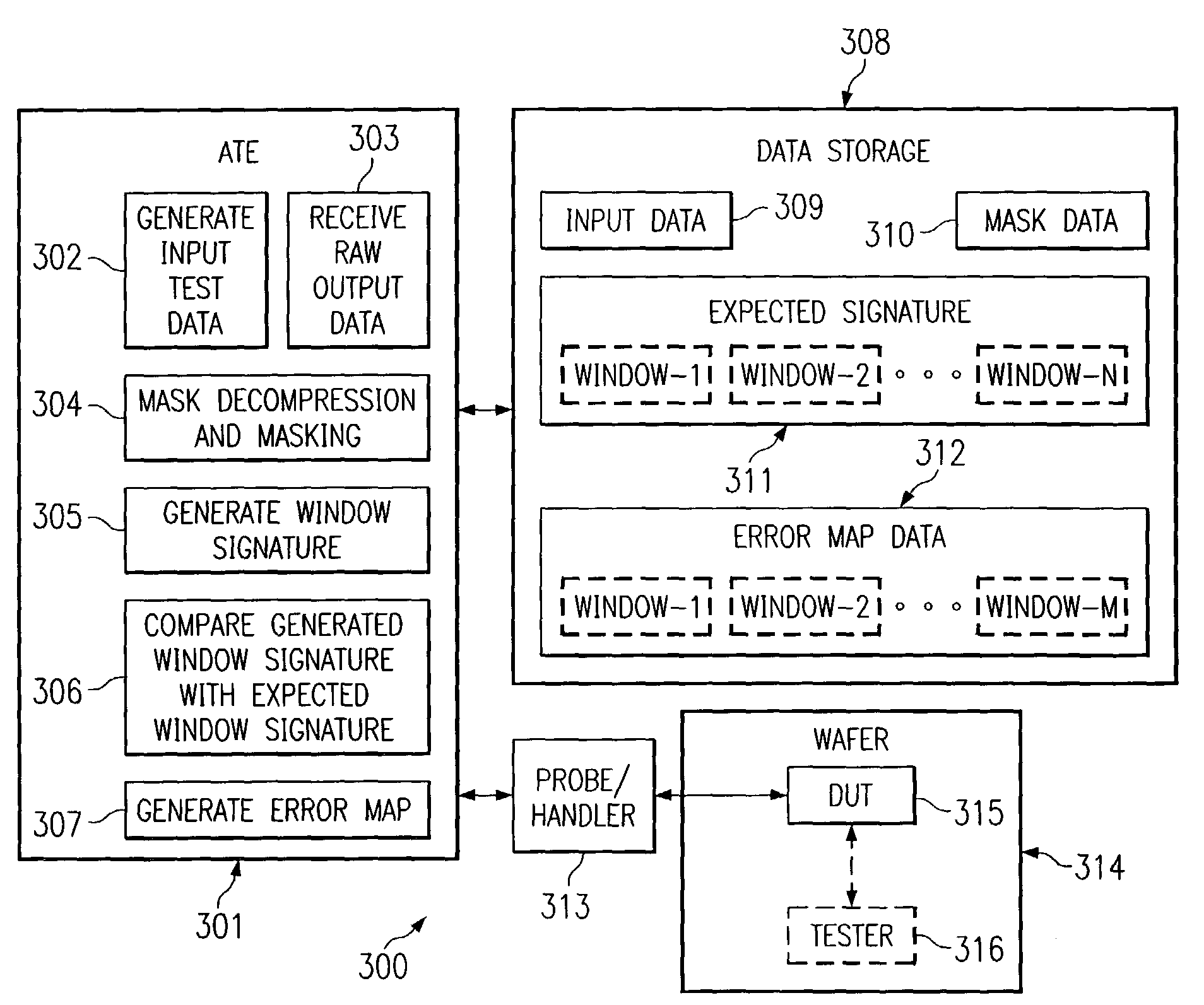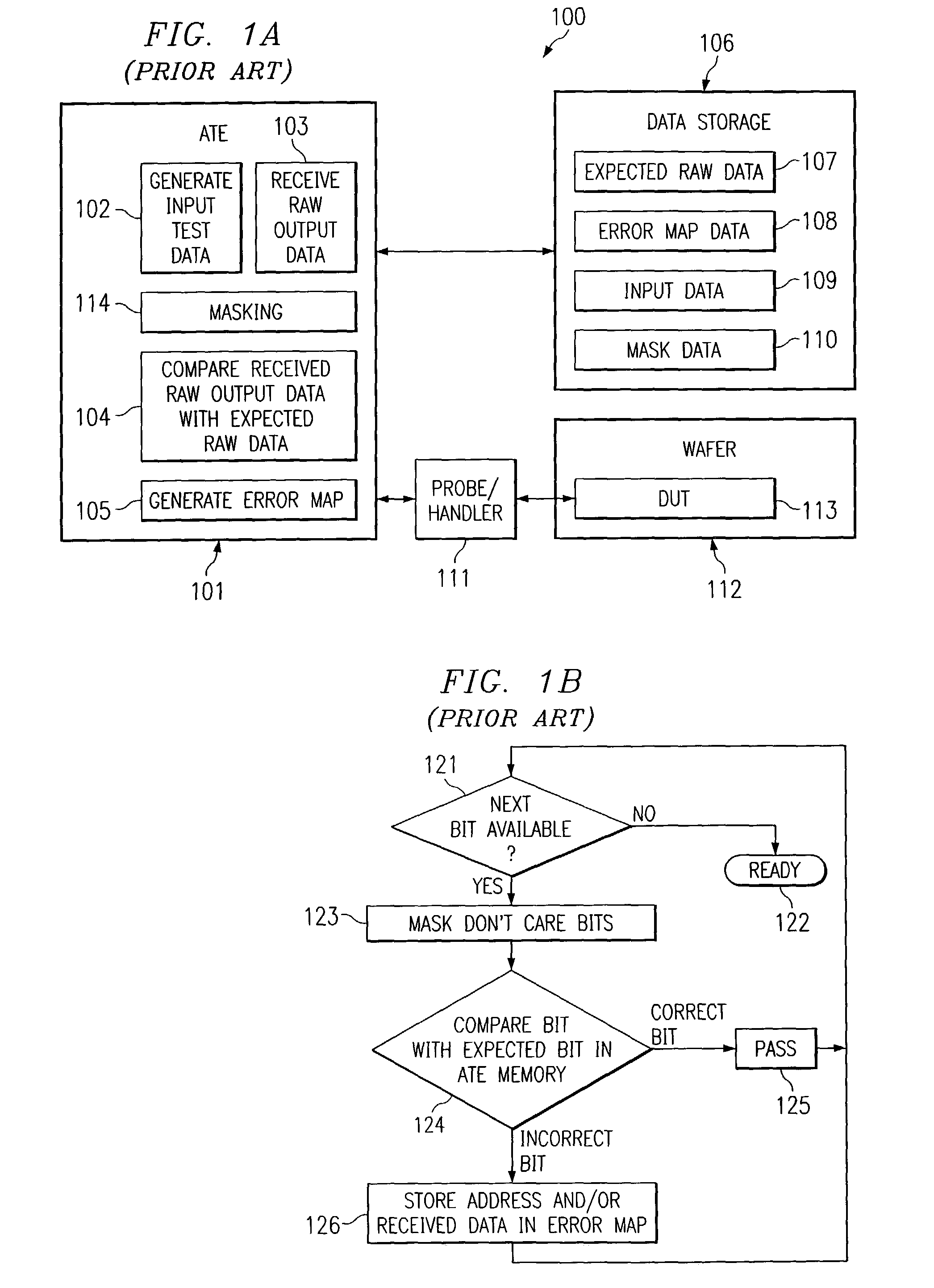System and method for testing circuitry using an externally generated signature
a technology of external generated signatures and circuits, applied in the field of integrated circuit testing, can solve the problems of consuming an consuming undesirably large amount of data storage space, and not expending time and expense in completing a chip assembly. the effect of minimizing the amount of data storag
- Summary
- Abstract
- Description
- Claims
- Application Information
AI Technical Summary
Benefits of technology
Problems solved by technology
Method used
Image
Examples
Embodiment Construction
[0038]As described above, in typical semiconductor testing, the device under test (DUT) (or “circuitry under test” (CUT)) receives a set of input stimuli from automatic test equipment (ATE) arranged external to the DUT, after which the ATE observes the DUT outputs. In general, the correct expected outputs of the DUT are stored in the ATE memory, and the ATE compares all of the output bits received from the DUT against the stored expected bit values to determine whether the DUT is functioning properly (e.g., whether the DUT is generating the expected output values responsive to the input values).
[0039]In the case of wafer-level testing, a probe may be brought into contact with one or more bonding pads of a die in order to communicate signals (e.g., a test pattern) to the die and to receive the signals output by the die responsive to the input signals. The probe is typically communicatively coupled to an external ATE that is operable to generate the signals to be input to a die and to...
PUM
 Login to View More
Login to View More Abstract
Description
Claims
Application Information
 Login to View More
Login to View More - R&D
- Intellectual Property
- Life Sciences
- Materials
- Tech Scout
- Unparalleled Data Quality
- Higher Quality Content
- 60% Fewer Hallucinations
Browse by: Latest US Patents, China's latest patents, Technical Efficacy Thesaurus, Application Domain, Technology Topic, Popular Technical Reports.
© 2025 PatSnap. All rights reserved.Legal|Privacy policy|Modern Slavery Act Transparency Statement|Sitemap|About US| Contact US: help@patsnap.com



